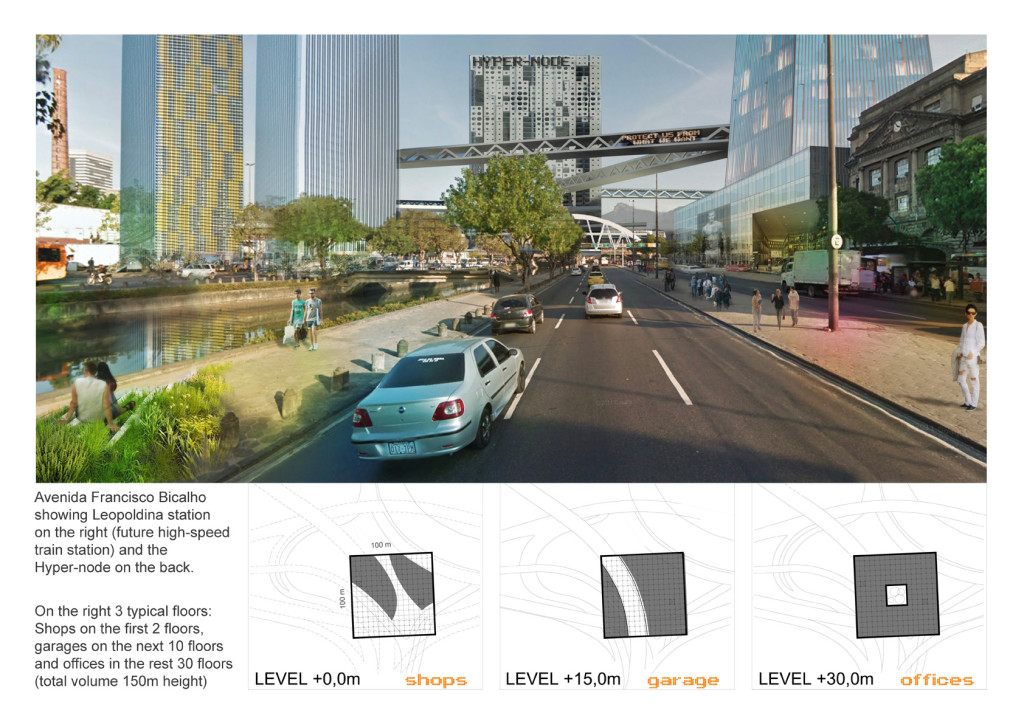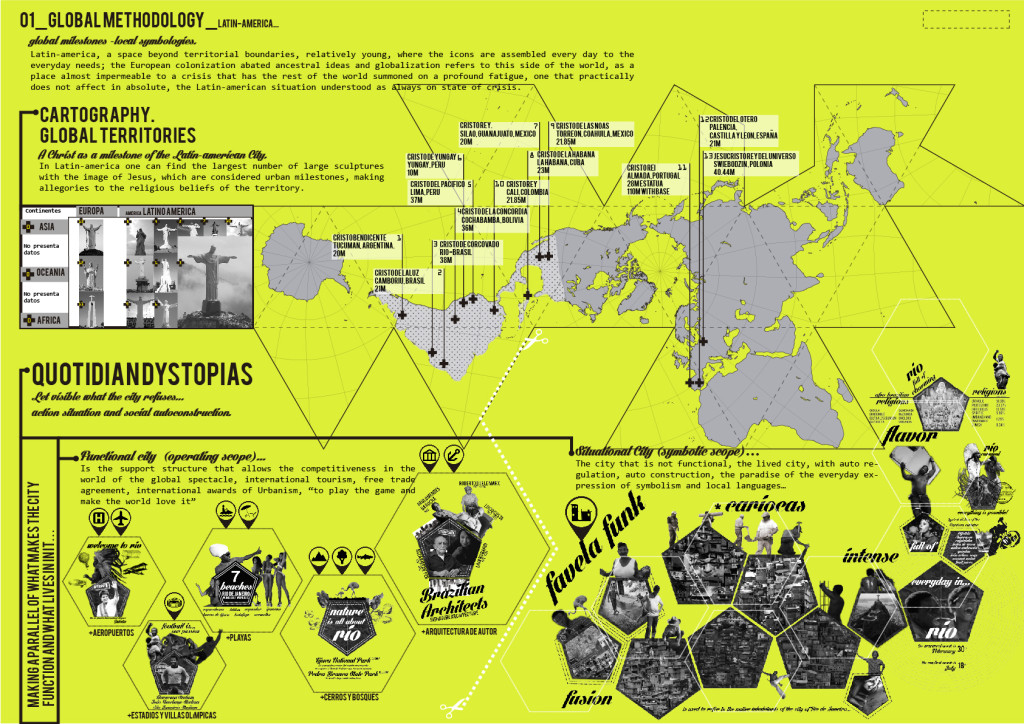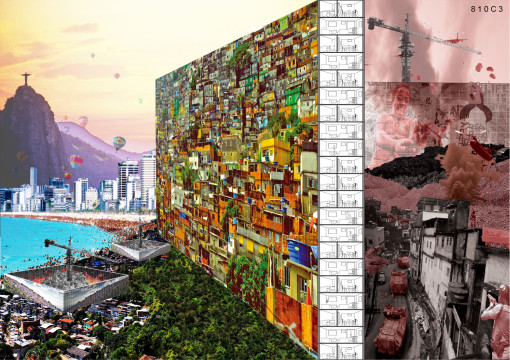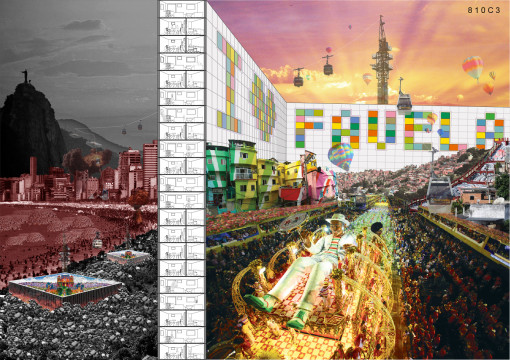Info:
Title: Wall-City - Code: 810c3Contest: Rio de Janeiro / 2013
By: YouSuk Kim - WooYeol Jung - SungMin Yoon - ChoongMoo Lee
Views: 6331 Likes: 2
Votes:
Alejandro Zaera-Polo 7 Jeffrey Inaba 7 Jeroen Koolhaas 7 Hernan Diaz Alonso 1 Cristiano Toraldo di Francia 8 Pedro Rivera 66.0
Wall-City
Cities exist as objective substances (the real) and subjective images (the unreal) synthesized. The perceptions of every individual create subjective images which has dichotomous way of division; the ‘good’ & ‘evil’. We are living in the world where more and more two components influence each other. Rio de Janeiro feeds itself only through generating countless ‘good’ images to attract capitals. And Favela, one of the real in the city and judged ‘evil’, was created by the immigrants driven by the ‘good’ images of the city. The normality of the Rio is this consolidated dynamics of the unreal creating the real. So the city is in confused state of producing the real and the unreal in closed repetitive cycle. Thus the city has lost identity and independency, and only has a single future of constant dependency for images. Evoking disgust for the city as an ‘image making machine’ promises a breakthrough this city mechanism. We propose “Wall-city” which divides the mixed images of the city in to the good and the evil, and the interior part of the “Wall-city” becomes a new independent layer where the real of the city can be free from all the judgments of the images. 1. Present, 2013 – Rio is the city living by the tourists who pursued illusions made by enormous amount of tourist attractions and beautiful sceneries. On the contrary, the favelas who pursued illusions also, had failed to realize their fantasies and became a shanty town creating ‘social evil’. “Wall-City” have surrounded such evil favelas and divided them from the ‘good’ physically and visually. Furthermore, through tower cranes, what is regarded ‘evil’ of the city is entirely thrown into the enormous waste baskets. And the façades of the original favelas which are considered ‘good’ having collective aesthetics are left as murals facing the city. And interior part of the “Wall-City” where most of the people from favelas are residing became extrinsic to the images and independent living territory. Rio have reached new golden era of tourism and the people of favelas finally became independent and free from the images of the city which have been regulating them ‘evil’. 2. Future, ???? – Rio, once the largest sea-port and the capital of the country, has lost glitz of the past and potential capitals which in result created favelas. Like such, City is in constant alteration through political, economic and social uncertainty. But in any circumstances the “Wall-City” successfully divides good and evil and the interior and exterior façades flexibly responds. Also the cranes are transformed into cable-car towers, when the outside becomes sick, to unite “Wall-Cities” as one ‘good’ territory of the city. And finally interior part of the “Wall-City” exists as a neutral value zone permanently. Thus “Wall-City” becomes wonder for independence from the domination of the images over the substance of the city.








